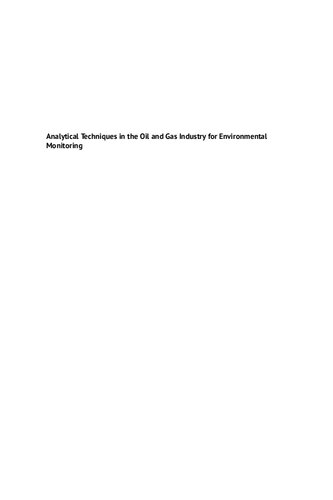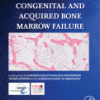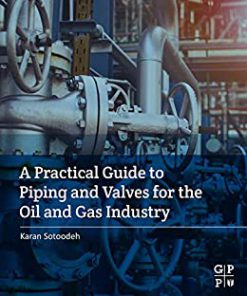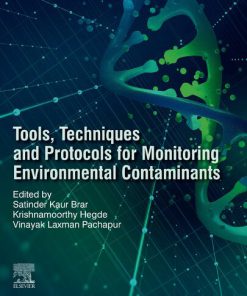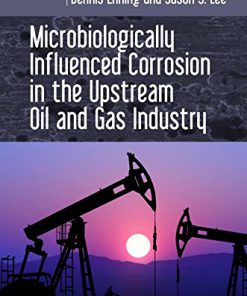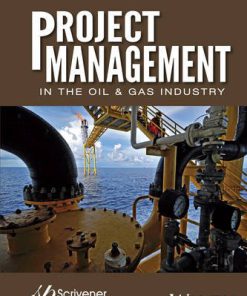Analytical Techniques in the Oil and Gas Industry for Environmental Monitoring 1st Edition by William Winniford,Melissa Dunkle 9781119523307 1119523303
$50.00 Original price was: $50.00.$25.00Current price is: $25.00.
Analytical Techniques in the Oil and Gas Industry for Environmental Monitoring 1st Edition by William Winniford,Melissa Dunkle – Ebook PDF Instant Download/Delivery:9781119523307 ,1119523303
Full download Analytical Techniques in the Oil and Gas Industry for Environmental Monitoring 1st Edition after payment
Product details:
ISBN 10: 1119523303
ISBN 13: 9781119523307
Author:William Winniford,Melissa Dunkle
A thorough introduction to environmental monitoring in the oil and gas industry
Analytical Techniques in the Oil and Gas Industry for Environmental Monitoring examines the analytical side of the oil and gas industry as it also provides an overall introduction to the industry. You’ll discover how oil and natural gas are sourced, refined, and processed. You can learn about what’s produced from oil and natural gas, and why evaluating these sourced resources is important.
The book discusses the conventional analyses for oil and natural gas feeds, along with their limitations. It offers detailed descriptions of advanced analytical techniques that are commercially available, plus explanations of gas and oil industry equipment and instrumentation. You’ll find technique descriptions supplemented with a list of references as well as with real-life application examples. With this book as a reference, you can prepare to apply specific analytical methods in your organization’s lab environment. Analytical Techniques can also serve as your comprehensive resource on key techniques in the characterization of oil and gas samples, within both refinery and environmental contexts.
- Understand of the scope of oil and gas industry techniques available
- Consider the benefits and limitations of each available process
- Prepare for applying analytical techniques in your lab
- See real examples and a list of references for each technique
- Read descriptions of off-line analytics, as well as on-line and process applications
As a chemist, engineer, instructor, or student, this book will also expand your awareness of the role these techniques have in environmental monitoring and environmental impact assessments.
Analytical Techniques in the Oil and Gas Industry for Environmental Monitoring 1st Table of contents:
Part I: Scope
1 Introduction
1.1 Introduction
1.2 Petroleum
1.3 Analytics
1.4 Reservoir Tracers
1.5 Emissions from the Petroleum Industry
1.6 Environmental Analysis and Monitoring
1.7 Conclusions
References
Part II: Introduction to the Petroleum Industry
2 Petroleum: From Wells to Wheels
2.1 Introduction
2.2 Petroleum in the Ancient World
2.3 The Petroleum System
2.4 The Upstream
2.5 Mid‐Stream
2.6 Downstream
2.7 Petrochemicals
2.8 The Future of Petroleum
References
Part III: Analytical Techniques Utilized in the Petroleum Industry
3 Petroleum Analysis Through Conventional Analytical Techniques
3.1 Introduction to Petroleum Analysis
3.2 Brief History on Petroleum Analysis
3.3 Conventional Analysis of Petroleum
References
4 Advanced Analytics for the Evaluation of Oil, Natural Gas, and Shale Oil/Gas
4.1 IRMS in the Oil and Gas Industry
4.2 Advanced Analytics for the Evaluation of Oil, Natural Gas, and Shale Oil/Gas: Comprehensive GC (GC × GC)
4.3 Petroleum and Hydrocarbon Analysis by Gas Chromatography: Vacuum Ultraviolet Spectroscopy
References
5 Liquid Chromatography: Applications for the Oil and Gas Industry
5.1 Introduction
5.2 Group‐Type Separations
5.3 Molecular‐Weight Distribution
5.4 Target Analysis
5.5 LC as a Pre‐separation Technique for GC Analysis
5.6 Conclusions
References
6 Supercritical Fluids in Chromatography: Applications to the Oil and Gas Industry
6.1 Introduction
6.2 Basics of SFC
6.3 Simulated Distillation (SIMDIST)
6.4 Group‐Type and Related Separations
6.5 Detailed Separations
References
7 Online and In Situ Measurements for Environmental Applications in Oil and Gas
7.1 Introduction
7.2 Characteristics of On‐line Analyzers
7.3 Water Analysis
7.4 Air Quality and Emissions Monitoring
7.5 Sample Conditioning
7.6 Well Drilling and Production
7.7 Texas Commission on Environmental Quality
7.8 Fenceline Monitoring
7.9 Pipeline and Fugitive Emission Monitoring with Drones
7.10 Types of Continuous Emission Monitors
7.11 Portable GCs
References
Part IV: Special Cases and Examples Related to the Petroleum Industry
8 Tracers for Oil and Gas Reservoirs
8.1 Introduction
8.2 Types of Tracers
8.3 Regulations
References
9 Environmental Impact of Emissions Originating from the Petroleum Industry
9.1 Global Warming
9.2 Environmental Impact of Diesel Emissions
9.3 Environmental Impact of Fossil Fuel Sourcing and Energy Conversion on Global Warming
References
Part V: Environmental Analysis
10 Environmental Analysis of Soil, Water, and Air
10.1 Water and Soil Monitoring
10.2 Total Petroleum Hydrocarbons in Soil
10.3 Volatile Organic Compound Analysis
10.4 Water Analysis
10.5 Portable GCs for Field Monitoring
10.6 Fingerprinting in the Oil and Gas Industry
References
Part VI: Future Trends in the Petroleum Industry
11 Future Trends
11.1 Introduction
11.2 Climate Change
11.3 Likely Scenarios
11.4 Summary
People also search for Analytical Techniques in the Oil and Gas Industry for Environmental Monitoring 1st:
analytical techniques in business
oil and gas analysis
gas analytical
analytical techniques definition
how to analyse oil and gas companies
Tags:
William Winniford,Melissa Dunkle,Techniques,Analytical,Environmental
You may also like…
Engineering
Microbiologically influenced corrosion in the upstream oil and gas industry 1st Edition Enning
Engineering


